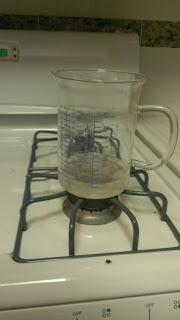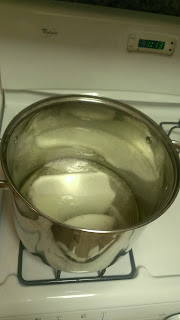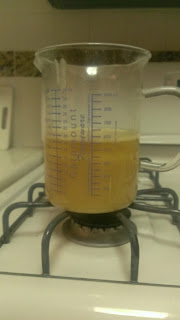Rationale
Nitrates are enormously useful compounds, and this blog is about simple chemistry, so investigating simple methods of producing them are extremely relevant.Conclusions
FIRST: Despite far too many bad internet references about making gunpowder out of urine, I have finally figured out why nobody gives instructions on how to do it. It is, for the most part, impractical.SECOND: If what you're looking for is soluble nitrates, it's far easier to use "normal" composting materials like grass clippings and animal products than to try to leverage the urea in urine directly.
The investigation
After doing the math on the saltpeter yield and after a lot more research on the composting process, I have decided to take another whack at figuring out what it would take.Target values
Ideal hot, nitrifying composting seems to occur near a C:N ratio of 25 and a moisture content of 40-60%. If there were nothing in the mass that wasn't nitrogen, carbon, or water, the ratios might look like: 40% water, 57.7% carbon, 2.3% nitrogen.Raw Materials
To produce 1 kg of soluble nitrates, we need 140g of nitrogen. Targeting a C:N of 25, we need 3.5kg (25 x 140g) of carbon. Since straw and sawdust are still 20% moisture, we would need 4.375kg of that material to provide the right amount of carbon to balance out the nitrogen. To get 140g of nitrogen from urea, we need 32L of urine, which is essentially 100% water.| Material | Urine | Straw or Sawdust | Total |
|---|---|---|---|
| Nitrogen(g) | 140 | 0 | 140 |
| Carbon(g) | 60 | 3440 | 3500 |
| Water(g) | 32000 | 875 | 32875 |
That would leave a moisture content of 90%. (32875g water vs 36515g total mass)
AHA!
The light has come on. Given the urea content of 32L of urine, we only need 3.5kg of carbon to get the ratio right, but the water content is beyond all reason. That's probably why no one documents urine as anything other than a "de minimus additive".Forcing the issue
Presuming the 32L could be reduced (boiled down?) to 1.625L (20-to-1 reduction) without loss of nitrogen, the numbers would add up more like| Material | Urine | Straw or Sawdust | Total |
|---|---|---|---|
| Nitrogen(g) | 140 | 0 | 140 |
| Carbon(g) | 60 | 3440 | 3500 |
| Water(g) | 1625 | 875 | 2500 |
Which gives a moisture content of 40%. (2500g water vs 6140g total mass) Close enough.
So if the presumption is valid and you had to do it this way, you'd do something like:
- Reduce volume of urine to 5% original
- Add 2.3-3 times (by weight) straw or sawdust
- Mix and compost it
Nota Bene
Most of the "municipal water purification" references on the web (which also deal with nitrifying bacteria) have an end goal of anaerobic denitrification so the organic nitrogen is ultimately expelled as inert nitrogen gas. In this case, the high water content is no problem.More practically
Follow the instructions from numerous sources which use fruit, vegetable, and fresh green plant matter. It produces the same nitrates, but doesn't require boiling urine.References
- Composting at LSU
- Composting at University of Idaho
- Composting at WebLife.org








